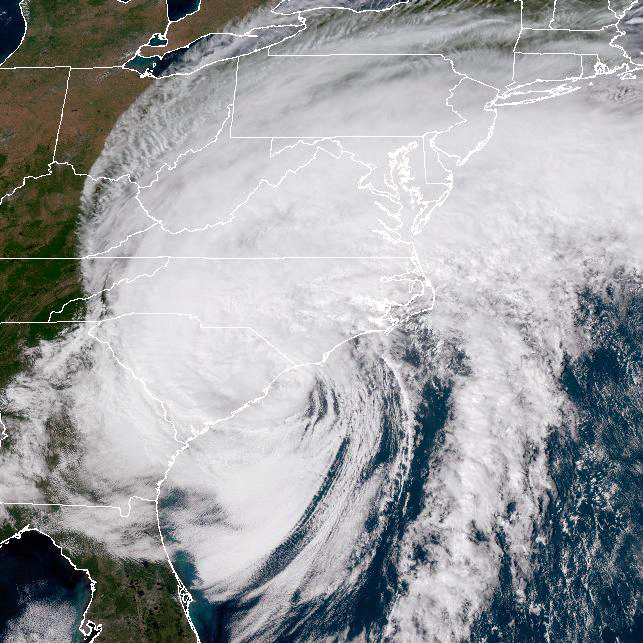Hurricane Ian, one of the worst storms ever to hit the United States, made landfall in South Carolina on Friday, delivering a powerful second punch after pummeling Florida.
The National Hurricane Center (NHC) said the storm struck near Georgetown, South Carolina, at 2:05 pm (1805 GMT) as a Category 1 hurricane with maximum sustained winds of 85 miles (140 kilometers) per hour.
The NHC warned people living along the Carolina coast that Ian could deliver “life-threatening storm surge” of up to seven feet (two meters) and damaging winds.
After weakening to a tropical storm as it crossed over Florida, where it caused billions of dollars in damage, Ian regained hurricane strength over the Atlantic.
President Joe Biden urged residents of South and North Carolina to “listen to all the warnings and directions from local officials and follow their instructions.”
As for storm-ravaged Florida, where at least 21 deaths have been reported, Biden said: “We’re just beginning to see the scale of the destruction.
“It’s likely to rank among the worst in the nation’s history,” he said of Ian, which barreled into Florida’s southwest coast on Wednesday as a Category 4 storm, a tick shy of the most powerful on the Saffir-Simpson wind scale.
“It’s going to take months, years to rebuild,” Biden said. “It’s not just a crisis for Florida. This is an American crisis.”
In Florida, rescue workers were busy assisting survivors on Friday and the Coast Guard said it had made 117 rescues using boats and helicopters.
The storm left hundreds of people in need of help in Florida, many trapped in flooded homes.
Governor Ron DeSantis said over 1,000 rescuers were going “up and down the coastline” checking on residents.
“Rescue personnel have gone to more than 3,000 homes in the hardest hit areas, going door to door to check on the occupants,” he said.
– ‘Ground zero’ –
DeSantis said the coastal town of Fort Myers where the hurricane made landfall, was “ground zero” but “this was such a big storm that there are effects far inland.”
Many people evacuated, but thousands chose to shelter in place and ride out the storm.
DeSantis said it was too early to give a death toll.
State officials said there had been one confirmed death from Ian and at least 20 others have been reported but have not yet been confirmed as being directly due to the storm.
In addition, 17 migrants were missing from a boat that sank during the hurricane on Wednesday, with one person found dead and nine others rescued, the Coast Guard said. Among them were four Cubans who swam to shore in the Florida Keys.
DeSantis said about 1.9 Florida residents were still without power on Friday and two barrier islands near Fort Myers, Pine Island and Sanibel Island, were cut off after the storm damaged causeways.
In Fort Myers, a handful of restaurants and bars reopened on Friday, giving an illusion of normalcy amid downed trees and shattered storefronts.
Dozens of people sat out on terraces under a bright sun, drinking beer and eating.
Dylan Gamber, 23, said he had been waiting for two hours at a pizzeria to get food to bring home.
“It was kind of bad, but we made it through,” he said. “The roof of our house came off, a big tree collapsed across our vehicles, our yard was flooded, but other than that we were pretty good.”
“As a community, we seem to be coming together and helping each other out.”
– ‘All submerged’ –
In nearby Bonita Springs, Jason Crosser, 37, was inspecting the damage to his store.
“The water went over the whole building,” Crosser said. “It was all submerged. It’s all saltwater and water damage.”
After making landfall in South Carolina, Ian is expected to weaken fast and dissipate by Saturday night.
Before pummeling Florida, Ian plunged all of Cuba into darkness after downing the island’s power network.
Electricity was gradually returning, but many homes remain without power.
Human-induced climate change is resulting in more severe weather events across the globe, scientists say — including with Ian.
According to a rapid and preliminary analysis, human-caused climate change increased the extreme rain that Ian unleashed by over 10 percent, US scientists said.
© Agence France-Presse










